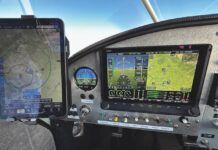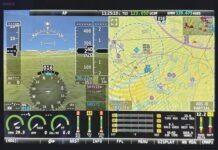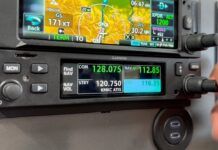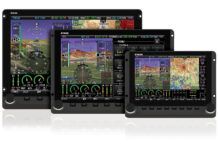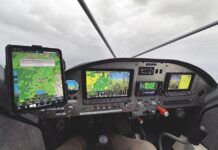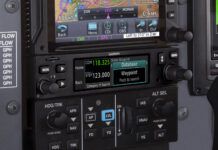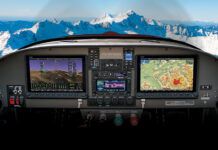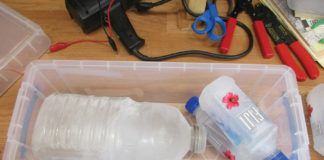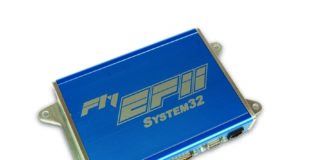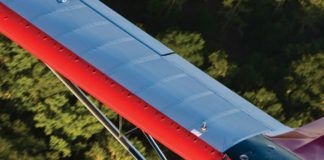Experimental airplanes built through the late-1990s had systems and instrumentation that closely followed their counterparts in store-bought designs. Youd see three pneumatic gyros in their little 3.125-inch holes, spun up by a vacuum pump and bracketed by old-school pitot-static systems; if you saw a 1990 Piper, you saw a 1990 RV-6A. Likewise, a typical 1990s homebuilt probably had a single-bus, 12-volt electrical system with an engine-driven alternator. The groundbreaking types might have a specialty battery in place of the heavier, expensive aviation item, but otherwise, tradition ruled.
Then a funny thing happened. Electronic instruments waltzed in, and the unreliable vacuum systems were being shown the door. Suddenly, the electrical system needed more than a cursory “thatll do” design phase, because it now had to carry all of the critical systems, not just part of them. Its imperative when designing to keep in mind the reliability and performance of each system that depends on electricity. For this discussion well divide the topic into two main groups: airframe and avionics first, then engine-centric electrical theories and philosophies.
Airframe and Avionics
Perhaps the most common questions relating electrically advanced aircraft are: 1) How many batteries do I need, and what size should they be? 2) How many alternators do I need, and what size should they be?
Of course, there is no single answer that will cover every aircraft. Each one depends significantly on a number of variables. The easiest place to start is determining whether you intend your plane to be used for VFR or IFR, so lets begin there.
If you don’t intend to fly your airplane great distances or will stick to VFR conditions, then its logical to decide on a simple electrical system. In this case you probably will have only simple flight instruments (perhaps an EFIS or engine monitor), a radio, transponder, maybe a handheld GPS and a few other goodies installed in the panel.
Yep, you’re saying: “Are you nuts, Stein? EFIS in a VFR airplane?” Believe it. We get queries all the time from pilots who never intend to enter clouds who still want an EFIS, in part because the good ones are lighter and more reliable than conventional gauges.
With this setup you should be fine with a single alternator and a single battery. Even if the alternator were to fail-and they still do from time to time-the battery should provide power long enough to get on the ground safely. You don’t need multiple buses or an “emergency” bus. If you intend to fly at night, it might be wise to consider a small backup battery for your EFIS or gyros; if no attitude gyros are installed, then you ought not be flying at night. (Yes, I know its legal to do so, but the first time you fly over the empty countryside on a moonless night, you’ll know why I insist on having attitude reference.)
Dancing in the Clouds
On the other hand, if you intend to fly the airplane in an IFR environment or even, in my view, cross-country, then its wise to design your electrical system with a bit more “robustness” than your day/VFR brethrens. This doesn’t automatically mean you need two batteries or two alternators, but it does mean that you need more than a simple “no backup of any kind” installation. (Feel free to disagree with me here. Many builders have flown their aircraft extensively cross-country without backups, but the potential is always there for a failure that puts you on the ground away from home. Robustness buys you flexibility as well as safety.)
Now were into fault tolerance: Which equipment can you afford to lose and still complete the flight safely? If you have one and only one attitude reference and it goes down, you are well and truly out of luck. Traditional instrument panels had some components powered by electricity and some by vacuum, separate power systems and, for that matter, separate components. Yes, a failure of the vacuum pump would render both the attitude indicator and directional gyro stupid, but you still had the trusty turn coordinator or, better, a turn-and-bank instrument. Lose electrical and the vacuum system should not be affected.
If your flight instruments are 100% dependent on electrical power, its essential that you provide those instruments some sort of alternative and backup electrical power. Luckily, most of the EFISes you can purchase now include the option of a backup battery. This is good. You can design a simple electrical system with one battery and one alternator, and have backup instrumentation running on its own internal batteries, and you’ll be just fine. However, if your EFIS does not have an internal battery, then its wise to provide it with another source of power.
Remember that though the main aircraft battery is your first backup, it also has to share its remaining storage capacity with everything in your airplane that is consuming current. This includes relays (even though small, they still eat amps), lights, ignitions, fuel pumps, flaps, trim systems, autopilots, radios, transponders and more.
When calculating the size of a primary or backup battery, its important to do a load analysis of every item in your plane that consumes current. Then you decide which items are critical for flight and, using the total current draw from those items, you can determine how much battery capacity you need.
The scenario where you might need either two batteries or two alternators (or both) would be if you installed flight instruments that don’t have an internal battery. Each method has its own benefits. Lets take a look at each scenario.
A Battery of Backup
Installing two batteries (primary plus backup) has the benefit of allowing you (if you wire it as such) to use either one or both of the batteries for starting the aircraft. It also may allow you to create two or more independent buses for driving avionics and other equipment in the plane. (Some EFISes have the capability for multiple independent power inputs and automatically select which source is appropriate.) A second battery also allows you to design your system so that you can power up some equipment on the ground-radio for clearance delivery, weather briefing, GPS flight plan loading, etc.-without draining the battery used for engine start.
Builders might choose a second battery that is of smaller amperage (current capacity) to save weight, an acceptable practice. Make sure you have a way to keep the batteries isolated electrically when need be, so that if one battery or its specific bus fails, it doesn’t drain the other. Even so, you still need a way to keep the second battery charged. This can be accomplished with bus tie switches, relays and/or diodes. A downside to installing multiple batteries is simply maintenance and upkeep.See Figure 1 for a simple example of an installation depicting two batteries and one alternator.
Supplementary Amps
The next option is to install a single main battery, a single main alternator and supplement it with a standby or backup alternator. Currently the most popular backup alternators are made by B&C Specialties and are available in 8-amp or 20-amp models. Our experience has shown that the SD-8 permanent-magnet 8-amp model is marginal for well-equipped panels, though it ought to be fine for keeping a nav/com, GPS and transponder working. If your load survey shows the airplane needing close to 8 amps on essential equipment, this alternator is not the best choice.
Our experience with the 20-amp model (SD-20) has shown a capable and reliable alternator. Wiring is relatively simple, and while the unit isn’t cheap (about $1000 with the required regulator), the long-term benefits cant be ignored. The SD-20 mounts on the vacuum pump pad of Lycoming or Continental engines. The required external voltage regulator provides over-voltage protection.
The benefits to having a secondary alternator are twofold. First, it obviously weighs less than a battery, and the associated wiring is less; secondly, it cant be run down, as long as the engine is turning. Typically the setup for the secondary alternator is to use it as a supplement to the main bus and/or to power a standby or emergency bus in addition to or in conjunction with the main alternator. The downside is that you cant use it on the ground or as an aid to starting, but the benefit of a constant current flow is a good thing. With a current capacity of 20 amps continuous, the SD-20 gives you a bit more flexibility for a longer period of time in the case of a main alternator failure. See Figure 2 for a simple example of an installation depicting one main battery and two alternators.
Seeing Double Double
The most popular way to supply the higher-end modern glass-cockpit-equipped aircraft with reliable and redundant electrical supplies has been to install dual batteries and dual alternators. This installation is definitely more complex than either of the previously discussed options, but it offers a few unique benefits you cant achieve otherwise. When installing two batteries and two alternators, the typical architecture of the electrical system is to have two separate and independent buses. One bus will have a dedicated battery and a dedicated alternator for charging that circuit. Also, its typical for this bus setup to have a cross-tie relay that allows the batteries to be shared for some tasks such as starting.
With two independent buses you will have a lot of flexibility for your avionics. Specifically, items such as EFISes commonly have multiple power inputs. With multiple buses you can power one set of inputs from one bus, and another set of inputs from the second bus. Another option is to split the avionics and divide them between the buses. This is the preferred method when installing high-end and complex avionics such as the Garmin G900X, where the builder is installing multiple radios, multiple GPSes and multiple EFISes. In this scenario you are able to split up the avionics so that if either bus fails, you’re still left with a comprehensive list of items that are under power. The downside is complexity. This setup will require twice the number of battery relays, an additional relay if you desire a cross-tie and of course a lot of extra wire. This architecture is really needed only if your panel is full of a lot of radios/avionics and you plan on flying a lot of IFR flights. See Figure 3 for a simple example of an installation depicting two main batteries and two alternators.
Tied Together, and Loving It
Regardless of which setup you choose, there are numerous options for tying various electrical inputs together. Obviously you could use switches and relays, but another common method for connecting either backup alternators or backup batteries is using a diode, which is basically like a check valve for electricity and allows current to flow one direction through it. This is beneficial when you create something like a bus limited to essential equipment. With such a bus being fed by a backup battery or alternator and also from the main battery, the intention is to have a fail-safe bus that will not feed back or supply another bus that might have failed (or could fail). This is where the diode is installed.
The diode must be rated at equal to or above the anticipated load for the total current draw of the bus it will be feeding. It can be physically located in the wire between the alternate electrical feed and the bus being fed, and it should be located in a maintenance friendly and safe location. The most popular method of professional installers is to mount the diode close to the actual bus being fed, and in some cases the diode can be mounted directly to the bus bar, which is preferred. During normal operation both the main buses and essential buses are supplied by the main battery/alternator. If there is a failure on the main bus and it is turned off, then the essential bus becomes powered by the secondary alternator or battery. By installing a diode between these buses, you stop the current flowing backward to the main bus from the essential bus, and the essential bus stays isolated. There are different ways to set up these buses, but again let me stress that simpler is better-always!
Recent developments in managing the electrical system and architecture are allowing users much more flexibility in the design of their electrical systems. Vertical Power (previously reviewed in September 2007 KITPLANES) released its production systems at Oshkosh last year. We (as well as other shops and customers) have now scrutinized Vertical Powers products. Basically it acts as a central electrical management system for your aircraft and allows a phenomenal amount of flexibility in the design of your system architecture. The system is extremely flexible in the management of buses, individual units and overall management of the aircraft. While this type of system is new to the GA world, airliners and biz jets have been running behind similar systems for years.
My view on this product is that it will reduce the wiring in your aircraft, simplify the electrical design process and lower the pilot workload in the cockpit. Overall, Im impressed enough with the system to recommend it to both our VFR and IFR customers. One side benefit is that it requires a lot of upfront planning. This is good because with the pre-made templates and electrical load spreadsheets from Vertical Power, you’ll have an extremely accurate plan of your entire electrical system by the time you’re finished designing it.
Keeping the Fan Turning
We tend to think of electrical supply only for the avionics and other systems such as flaps and gear, but spend some time considering the firewall-forward. Its likely that your engine-injected or carbureted-has a mechanical engine-driven pump as the primary way to get fuel from the tanks to the cylinders. But most have electric boost (or backup) pumps that need to be considered in any electrical-system design. The odds of having an electrical-system failure at the same time that the engine-driven pump fails are low, but not, theoretically, zero. In addition, some designs use electric pumps to move fuel from auxiliary tanks to the mains; lose all electrical, and that fuel becomes unusable. I would argue that these transfer pumps be considered part of your essential equipment.
Modern homebuilts are likely to have something beyond the traditional dual-magneto ignition system, too. (The whole point of using mags is that they’re electrically independent of the airframe-except for those needing electrical power for starting purposes-but the majority of traditional engines today have impulse-coupled mags that are independent of the airframe electrical.) If you’re using electronic ignition, consider how to power such a system reliably. Sure, most builders opt for one mag to back up the electronic ignition, but a total electrical-system outage puts you back to a single-point failure mode; lose that mag, and you’re gliding.
All of the modern electronic ignition systems come with their own set of unique requirements, and builders have suffered various headaches and maladies from each and every company. To reduce the likelihood of problems from these systems, its imperative that you follow the manufacturer recommendations for installation and power supply.
Steins Three Rules
for Electrical Systems
Rule Number One: Thou shall not make your electrical system any more complex than it need be. Sure the DC-9 you fly at work may have 12 buses in it, but that doesn’t mean you need it for your homebuilt VFR day fun flier. Even if your airplane is a high-end IFR machine with multiple EFISes, GPSes, radios and other widgets, keep the electrical design simple and robust. The less complicated you make your design, the more reliable, user friendly and safer your plane will be. More switches may look cool, but when you have an emergency, sometimes less is better.
Rule Number Two: Thou shall not fly IFR, install dual electronic ignitions, dual electronic fuel pumps or any other engine critical items that rely 100% on electrical power without installing some sort of alternate electrical power supply. At the very least install a secondary small battery or standby alternator to supply power to critical engine and fuel systems. The same goes for the attitude indicator; if you only have one, then it should either have its own backup battery or a secondary power supply. Of course, having two attitude indicators is preferred!
Rule Number Three: Thou shall take the time to prepare a spreadsheet or document listing all of the electrical loads for the airplane-the load analysis we talked about earlier. This seemingly simple task will save you many hours down the road and greatly simplify the planning, purchasing, wiring and maintenance of your aircraft. Read the manufacturers specs for the units you intend to use and study their power requirements. Youll be happy you did, and you’ll have a much deeper understanding of your airplane when you finish it.
If you have specific questions for author Stein Bruch, or have certain projects youd like us to cover, email us at
[email protected] with “About Avionics” in the subject line.

